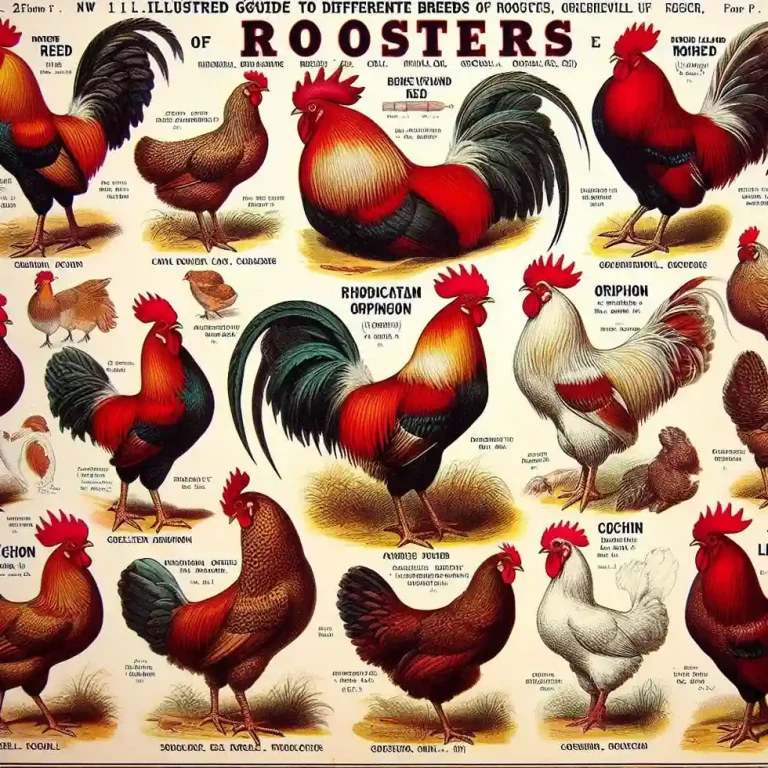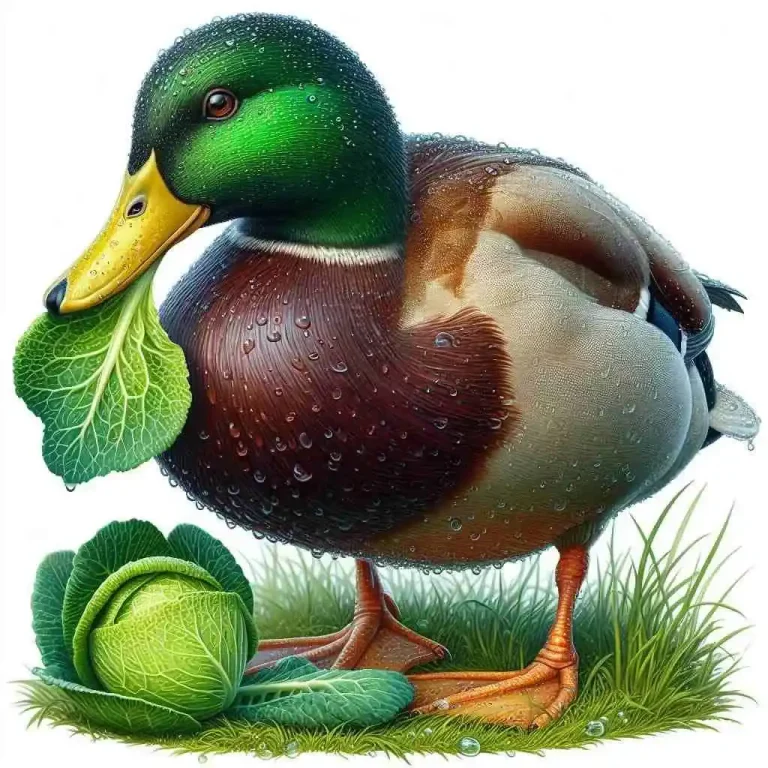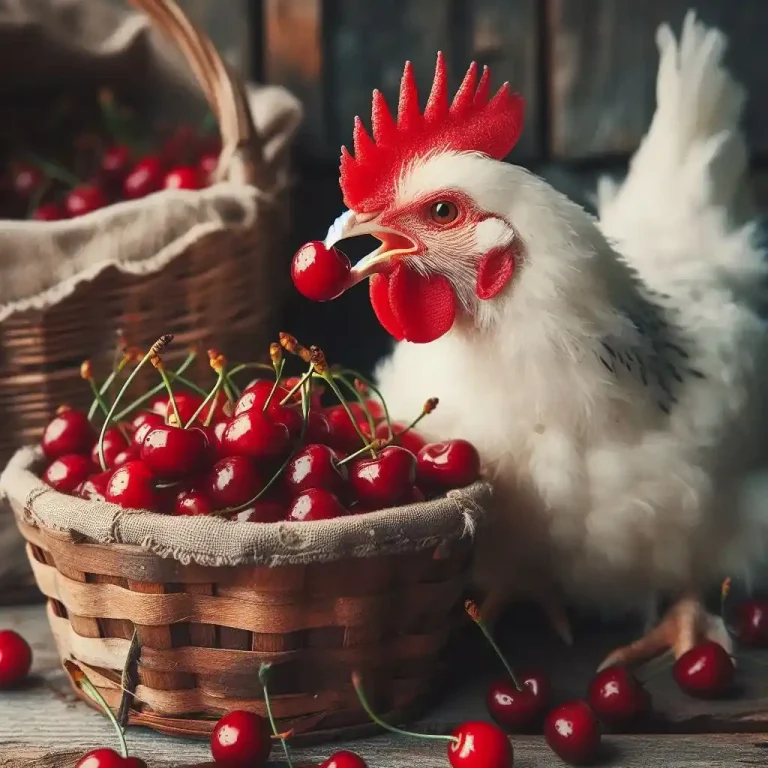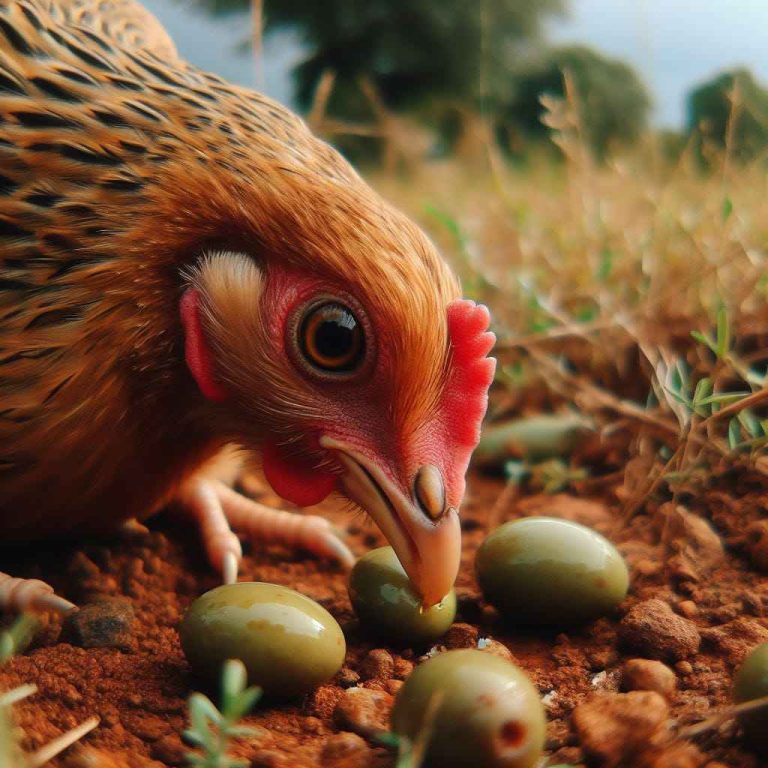Cinnamon Queen Chickens
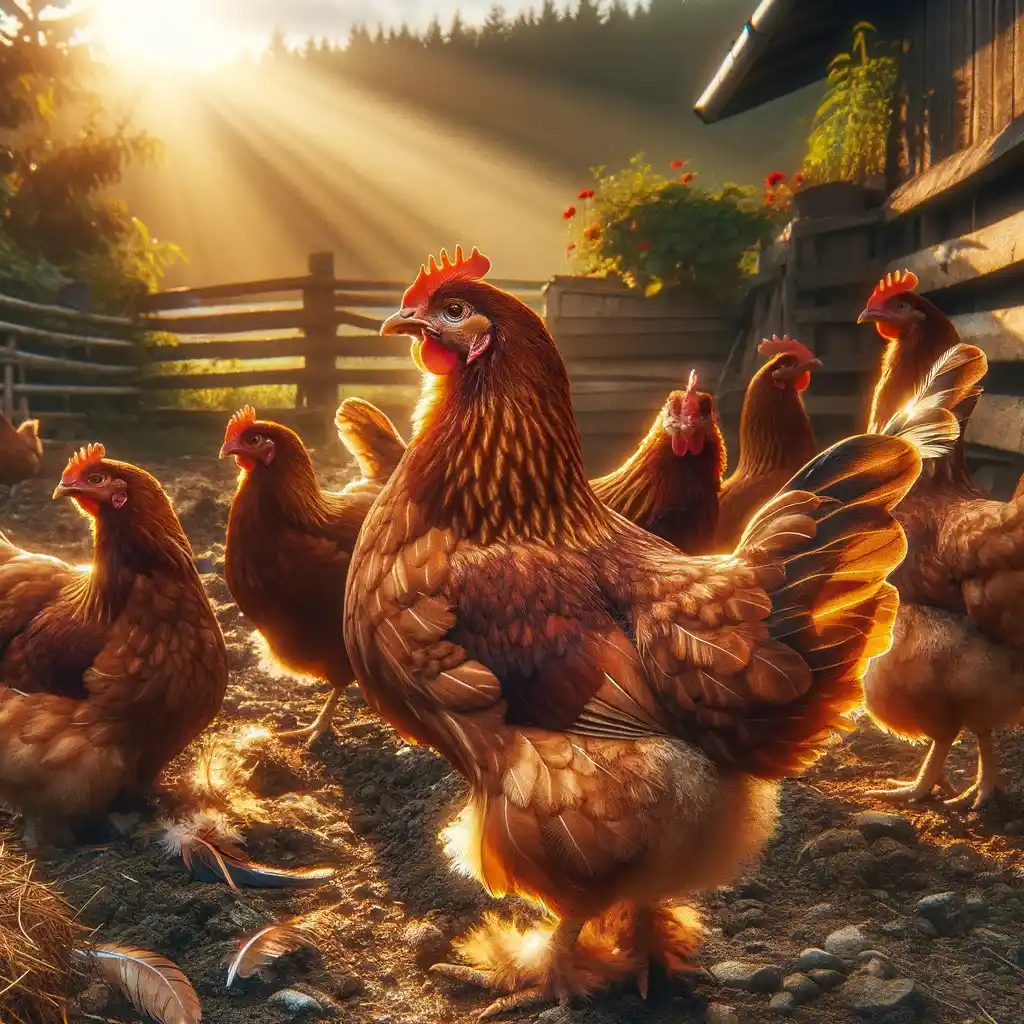
Introduction to Cinnamon Queen Chickens
The Cinnamon Queen chicken, a hybrid breed renowned for its versatility and productivity, holds a special place in the hearts of poultry enthusiasts worldwide. Developed by crossing Rhode Island Red and Rhode Island White chickens, the Cinnamon Queen inherits the best traits from both parent breeds, resulting in a bird that excels in various aspects of poultry keeping.
With its distinctive cinnamon-colored feathers and elegant appearance, the Cinnamon Queen immediately captures attention in any flock. This hybrid breed is known for its attractive plumage, characterized by shades of rich brown and red that shimmer in the sunlight. Beyond its visual appeal, the Cinnamon Queen is prized for its exceptional egg-laying abilities, making it a popular choice for backyard flock owners, homesteaders, and small-scale egg producers.
One of the key characteristics of Cinnamon Queen chickens is their prolific egg production. These birds are renowned for their ability to lay a high volume of large, brown eggs with strong shells and rich yolks. Whether kept for personal enjoyment or commercial purposes, Cinnamon Queen chickens consistently deliver a reliable supply of fresh and nutritious eggs, making them a valuable asset to any poultry operation.
In addition to their impressive egg-laying capabilities, Cinnamon Queen chickens are also valued for their friendly and docile temperament. They are known for being calm and sociable birds, making them easy to handle and interact with, especially for novice poultry keepers and families with children. Their gentle disposition adds to their appeal as backyard pets and contributes to a positive experience for poultry enthusiasts of all ages.
Overall, the Cinnamon Queen chicken embodies the perfect balance of beauty, utility, and temperament, making it a cherished breed among poultry enthusiasts. Whether admired for its striking appearance, admired for its egg-laying prowess, or appreciated for its amiable nature, the Cinnamon Queen continues to captivate hearts and enrich lives in the world of poultry keeping.
History and Origin of Cinnamon Queen Chickens
The history and origin of Cinnamon Queen chickens trace back to the development of hybrid poultry breeds aimed at enhancing certain desirable traits for commercial egg production. The Cinnamon Queen is a result of crossing two well-established breeds: the Rhode Island Red and the Rhode Island White.
The Rhode Island Red, known for its excellent egg-laying abilities and hardiness, originated in the United States in the late 19th century. Developed in Rhode Island and Massachusetts, this breed quickly gained popularity among poultry keepers for its prolific egg production and suitability for various climates and management systems.
On the other hand, the Rhode Island White emerged as a counterpart to the Rhode Island Red, offering similar qualities but with a distinctive white plumage.
Physical Characteristics of Cinnamon Queen Chickens
The Cinnamon Queen chicken is distinguished by its unique physical characteristics, which combine elements from both of its parent breeds, the Rhode Island Red and Rhode Island White. Here’s an overview of the physical traits commonly associated with Cinnamon Queen chickens:
Plumage
Cinnamon Queen chickens typically exhibit a striking appearance characterized by a combination of rich brown and reddish hues in their feathers. This cinnamon-colored plumage is one of the breed’s most distinctive features, giving them a vibrant and attractive appearance.
Size
Cinnamon Queen chickens are known for their medium to large size, with hens typically weighing around 6-7 pounds and roosters slightly heavier at 7-8 pounds. Their robust build and sturdy frame reflect their dual-purpose heritage, making them suitable for both egg production and meat consumption.
Body Shape
Cinnamon Queen chickens have a well-rounded body shape with broad, muscular chests and moderately long backs. They exhibit a balanced and proportionate conformation, with a straight and upright posture that reflects their overall health and vitality.
Comb and Wattles
Like their Rhode Island Red ancestors, Cinnamon Queen chickens typically feature single combs and bright red wattles. The comb is typically medium-sized and upright, while the wattles are smooth and evenly matched in size. These facial features add to the breed’s distinct appearance and contribute to their overall health and well-being.
Legs and Feet
Cinnamon Queen chickens have sturdy legs and feet that are well-suited for foraging and scratching. Their legs are typically yellow or orange in color, with four toes on each foot, including a back toe that may be slightly elevated. These strong and agile limbs enable them to move freely and explore their surroundings with ease. Overall, the physical characteristics of Cinnamon Queen chickens reflect their dual-purpose heritage and utility in both egg production and meat quality. Their vibrant plumage, sturdy build, and distinct facial features make them a visually appealing and valuable addition to any poultry flock.
Temperament and Behavior of Cinnamon Queen Chickens
The temperament and behavior of Cinnamon Queen chickens make them a popular choice among poultry enthusiasts for backyard flocks and small-scale egg production. Here’s an overview of the typical temperament and behavior traits exhibited by Cinnamon Queen chickens:
Docile Nature
Cinnamon Queen chickens are known for their friendly and docile temperament, making them easy to handle and interact with. They often exhibit calm and gentle behavior, which makes them suitable for families with children or novice poultry keepers.
Sociable Disposition
These chickens are naturally social creatures and enjoy the company of both humans and other chickens. They often thrive in environments where they have plenty of opportunities for social interaction and companionship, whether with their human caretakers or fellow flock members.
Active Foragers
Cinnamon Queen chickens are active foragers and enjoy scratching and pecking for insects, seeds, and other food items in the soil. Their natural instinct to forage makes them well-suited for free-range environments where they can roam and explore their surroundings.
Curious and Inquisitive: With their curious and inquisitive nature, Cinnamon Queen chickens are often observed exploring their surroundings and investigating new objects or areas within their environment. Their innate curiosity adds to their charm and makes them enjoyable to observe.
Egg-Laying Habits
Cinnamon Queen chickens are prolific layers, known for their consistent production of large brown eggs. They typically exhibit regular egg-laying patterns and may become broody occasionally, especially during the warmer months.
Tolerance to Handling
Due to their calm demeanor and gentle disposition, Cinnamon Queen chickens are generally tolerant of handling and human interaction. This makes them well-suited for activities such as petting, grooming, and even participating in poultry shows or exhibitions. Overall, the temperament and behavior of Cinnamon Queen chickens make them ideal additions to backyard flocks, homesteads, and small farms. Their friendly nature, sociable disposition, and reliable egg-laying capabilities contribute to their popularity among poultry keepers of all levels of experience.
Egg Production and Qualities of Cinnamon Queen Chickens
Egg production and quality are key attributes that contribute to the appeal of Cinnamon Queen chickens. Known for their prolific laying abilities and the quality of their eggs, Cinnamon Queens are valued for their contributions to home egg production and small-scale farming operations. Here’s a closer look at egg production and the qualities of eggs laid by Cinnamon Queen chickens:
Prolific Egg Layers
Cinnamon Queen chickens are renowned for their consistent and abundant egg production. Hens typically begin laying eggs at around 5-6 months of age and continue to produce eggs regularly throughout their laying cycle. With proper care and management, Cinnamon Queens can lay up to 250-300 eggs per year, making them highly productive layers.
Large Egg Size
The eggs laid by Cinnamon Queen chickens are notably large in size, with most eggs falling into the large or extra-large category. These substantial eggs are favored by many consumers for their generous size and impressive yolk-to-white ratio, making them ideal for various culinary applications.
Strong Shell Quality
Eggs laid by Cinnamon Queen chickens typically have strong and durable shells that help protect the delicate contents inside. The robust shell quality of Cinnamon Queen eggs reduces the risk of breakage during handling and transportation, ensuring that the eggs reach consumers in optimal condition.
Rich Yolk Color
The yolks of eggs laid by Cinnamon Queen chickens are known for their deep golden color, indicative of their nutritional quality. The rich hue of the yolks is often associated with a higher concentration of vitamins, minerals, and essential nutrients, making Cinnamon Queen eggs a nutritious choice for consumers.
High Nutritional Value
Cinnamon Queen eggs are prized for their high nutritional value, offering a rich source of protein, vitamins, and minerals. These nutrient-dense eggs are a valuable addition to a balanced diet and can contribute to overall health and well-being when consumed as part of a nutritious meal plan. Overall, the egg production and qualities of Cinnamon Queen chickens make them a top choice for backyard egg production, small-scale farming, and sustainable agriculture. Their prolific laying abilities, large egg size, strong shell quality, rich yolk color, and high nutritional value combine to make Cinnamon Queen eggs a desirable and sought-after product for consumers.
Benefits and Uses of Cinnamon Queen Chickens
Cinnamon Queen chickens offer a multitude of benefits and have various uses, making them valuable assets in both backyard and commercial poultry operations. Here are some of the key benefits and uses of Cinnamon Queen chickens:
Egg Production
One of the primary benefits of Cinnamon Queen chickens is their exceptional egg-laying abilities. These chickens are prolific layers, capable of producing a high volume of large, brown eggs throughout the year. Their consistent egg production makes them an excellent choice for individuals and families looking to supplement their diet with fresh, homegrown eggs.
Dual-Purpose
While Cinnamon Queen chickens are primarily known for their egg-laying prowess, they also possess qualities that make them suitable for meat production. Their robust build and substantial size mean that they can be raised for meat once their egg-laying productivity declines. This dual-purpose nature adds to their versatility and utility in small-scale farming operations.
Low Maintenance
Cinnamon Queen chickens are relatively low maintenance compared to some other poultry breeds. They are hardy and adaptable birds that can thrive in various climates and management systems. With proper care and attention to their basic needs, such as adequate housing, nutrition, and healthcare, Cinnamon Queens can flourish with minimal intervention from their owners.
Friendly Temperament
Cinnamon Queen chickens are known for their docile and friendly temperament, making them ideal additions to backyard flocks and family farms. They are often sociable and enjoy interacting with their human caretakers, especially when provided with regular handling and attention. Their gentle disposition makes them suitable for households with children and novice poultry keepers.
Pest Control
Like many chicken breeds, Cinnamon Queen chickens have a natural instinct for foraging and hunting insects and other pests. Allowing them to free-range in the yard or garden can help reduce pest populations and promote a healthier ecosystem. Additionally, their scratching and pecking behavior can help aerate and fertilize the soil, contributing to garden health and productivity. Overall, the benefits and uses of Cinnamon Queen chickens make them valuable assets for individuals, families, and small-scale farmers alike. Whether for egg production, meat supply, or pest control, these versatile birds offer numerous advantages and opportunities for sustainable and self-sufficient living.
Health Considerations for Cinnamon Queen Chickens
Ensuring the health and well-being of Cinnamon Queen chickens is essential for maintaining their productivity and longevity. Like all poultry breeds, Cinnamon Queens may be susceptible to various health issues that can impact their overall health and egg-laying performance. Here are some important health considerations to keep in mind when caring for Cinnamon Queen chickens:
Preventive Healthcare
Implementing a proactive approach to healthcare is crucial for preventing common poultry diseases and ailments. This includes regular vaccinations, deworming, and parasite control measures to protect against infectious diseases and internal parasites that can affect the health of the flock.
Nutritional Needs
Providing a balanced and nutritious diet is essential for supporting the health and vitality of Cinnamon Queen chickens. A diet consisting of high-quality poultry feed supplemented with fresh fruits, vegetables, and occasional treats can help ensure that chickens receive the essential nutrients they need for optimal health and egg production.
Clean and Sanitary Conditions
Maintaining clean and sanitary living conditions is vital for preventing the spread of diseases and minimizing stress-related health issues in Cinnamon Queen chickens. Regularly cleaning and disinfecting the coop, nesting boxes, and feeding areas can help reduce the risk of bacterial and fungal infections that can compromise the health of the flock.
Environmental Stressors
Minimizing environmental stressors such as extreme temperatures, overcrowding, and predator threats is important for promoting the overall well-being of Cinnamon Queen chickens. Providing adequate shelter, ventilation, and protection from predators can help reduce stress and enhance the resilience of the flock against health challenges.
Observational Monitoring
Regularly monitoring the behavior, appearance, and egg-laying patterns of Cinnamon Queen chickens can help identify early signs of health problems or distress. Paying attention to changes in appetite, energy levels, egg quality, and respiratory symptoms can prompt timely intervention and veterinary care if needed.
Veterinary Care
Establishing a relationship with a poultry veterinarian and seeking professional guidance when necessary is essential for addressing health concerns and implementing effective treatment strategies for Cinnamon Queen chickens. Veterinary care may include routine check-ups, diagnostic testing, and treatment for injuries or illnesses that may arise. By prioritizing preventive healthcare, nutrition, hygiene, environmental management, and attentive monitoring, poultry keepers can help ensure the health and well-being of their Cinnamon Queen chickens, thereby maximizing their productivity and longevity.
Care and Maintenance of Cinnamon Queen Chickens
Proper care and maintenance are essential for ensuring the health, well-being, and productivity of Cinnamon Queen chickens. Whether raising them in a backyard flock or on a small farm, implementing sound management practices is crucial for meeting their needs and promoting their overall welfare. Here are some key aspects to consider when caring for and maintaining Cinnamon Queen chickens:
Housing Requirements
Providing a suitable housing environment is essential for protecting Cinnamon Queen chickens from the elements, predators, and environmental stressors. The chicken coop should offer ample space for roosting, nesting, and foraging, with adequate ventilation, lighting, and insulation to maintain optimal conditions year-round.
Bedding Material
Using clean and comfortable bedding material in the chicken coop is important for maintaining cleanliness and hygiene. Common bedding options include straw, wood shavings, or recycled paper bedding, which should be changed regularly to prevent moisture buildup and odor accumulation.
Feeding and Nutrition
Offering a balanced and nutritious diet is essential for supporting the health, growth, and egg-laying performance of Cinnamon Queen chickens. A commercial poultry feed formulated specifically for laying hens is recommended, supplemented with fresh fruits, vegetables, and occasional treats to provide variety and enrichment.
Water Supply
Access to clean and fresh water is crucial for Cinnamon Queen chickens’ hydration, digestion, and overall health. Ensure that chickens have continuous access to clean water sources, and regularly check and clean waterers to prevent contamination and bacterial growth.
Grooming and Maintenance
Regular grooming and maintenance practices can help keep Cinnamon Queen chickens clean, healthy, and comfortable. This includes trimming overgrown toenails, inspecting and treating for parasites, and checking for any signs of injury or illness that may require attention.
Health Monitoring
Monitoring the health and well-being of Cinnamon Queen chickens on a regular basis is important for identifying and addressing any potential health issues promptly. Keep an eye out for changes in behavior, appetite, egg production, or physical appearance, and consult a veterinarian if any concerns arise.
Biosecurity Measures
Implementing biosecurity measures is essential for preventing the introduction and spread of diseases within the flock. This includes limiting exposure to potential sources of infection, such as wild birds or contaminated equipment, and practicing good hygiene practices when handling chickens or entering the chicken coop. By providing proper care and maintenance, poultry keepers can help ensure the health, happiness, and productivity of their Cinnamon Queen chickens, allowing them to thrive and flourish in their environment.
Breeding and Rearing Cinnamon Queen Chickens
Breeding and rearing Cinnamon Queen chickens can be a rewarding endeavor for poultry enthusiasts looking to maintain or improve the breed’s characteristics and productivity. Whether you’re a backyard hobbyist or a small-scale farmer, understanding the principles of breeding and rearing is essential for producing healthy, robust, and productive chickens. Here are some key considerations for breeding and rearing Cinnamon Queen chickens:
Selecting Breeding Stock
Start by selecting high-quality breeding stock with desirable traits such as strong egg-laying abilities, good health, and adherence to breed standards. Choose birds with well-developed bodies, vibrant plumage, and friendly temperaments to serve as the foundation for your breeding program.
Breeding Strategy
Determine your breeding goals and develop a breeding strategy that aligns with your objectives. Whether you’re focused on improving egg production, meat quality, or specific physical traits, select breeding pairs that complement each other and have the potential to produce offspring with desired characteristics.
Breeding Methods
Choose between natural mating or artificial insemination methods depending on your preferences, resources, and expertise. Natural mating allows chickens to breed naturally, while artificial insemination involves manually collecting and inseminating eggs to control breeding outcomes more precisely.
Incubation and Hatching
Collect fertile eggs from selected breeding pairs and incubate them under optimal conditions to ensure successful hatching. Use a reliable incubator with accurate temperature and humidity control, and monitor the developing embryos closely throughout the incubation period. Once hatched, provide chicks with appropriate warmth, humidity, and nutrition to promote healthy growth and development.
Caring for Chicks
Properly care for and raise the chicks to ensure their health, well-being, and eventual integration into the flock. Provide brooder facilities with adequate heating, bedding, and space to accommodate the growing chicks. Offer a balanced diet of commercial chick starter feed supplemented with vitamins, minerals, and probiotics to support their growth and development.
Monitoring and Evaluation
Monitor the growth, health, and performance of the chicks as they mature, and evaluate their suitability for breeding or other purposes. Keep detailed records of breeding outcomes, hatch rates, growth rates, and any observable traits or characteristics to inform future breeding decisions and improve the overall quality of your flock.
Continued Selection and Improvement
Continuously assess and select breeding stock based on their performance, traits, and adherence to breeding goals. Implement selective breeding practices to perpetuate desirable traits and eliminate undesirable ones, gradually improving the overall quality and productivity of your Cinnamon Queen flock over time. By following these breeding and rearing practices, poultry keepers can successfully raise and maintain a healthy and productive flock of Cinnamon Queen chickens, ensuring their long-term sustainability and success.
Common Challenges and Solutions for Cinnamon Queen Chickens
Raising Cinnamon Queen chickens comes with its share of challenges, but with proactive management and proper care, many common issues can be effectively addressed. Here are some common challenges that poultry keepers may encounter when raising Cinnamon Queen chickens, along with potential solutions:
Predators and Pests
Challenge: Cinnamon Queen chickens are vulnerable to predation by predators such as foxes, raccoons, hawks, and snakes. Additionally, external parasites like mites and lice can infest the flock, causing discomfort and health issues. Solution: Implement predator-proofing measures such as secure fencing, sturdy coop construction, and predator deterrents like motion-activated lights or sound devices. Regularly inspect chickens for signs of parasites and treat infestations promptly with appropriate pest control products or natural remedies.
Egg Production Issues
Challenge: Fluctuations in egg production, reduced egg size, or irregular laying patterns can occur due to factors such as stress, nutritional imbalances, or age-related declines in productivity. Solution: Ensure chickens receive a balanced diet rich in essential nutrients, including calcium and protein, to support optimal egg production. Minimize stressors in the environment, provide clean nesting boxes, and ensure proper lighting conditions to encourage consistent laying. Closely monitor the health and behavior of chickens and address any underlying health issues that may impact egg production.
Health Problems
Challenge: Cinnamon Queen chickens may be susceptible to various health issues such as respiratory infections, parasitic infestations, or bacterial diseases, especially in crowded or unsanitary conditions. Solution: Practice good biosecurity measures to prevent the introduction and spread of diseases within the flock. Maintain clean and sanitary living conditions, provide access to fresh water and nutritious feed, and implement a regular health monitoring program. Consult with a poultry veterinarian if health issues arise and follow their recommendations for diagnosis and treatment.
Environmental Stress
Challenge: Extreme temperatures, humidity, or adverse weather conditions can stress Cinnamon Queen chickens, affecting their health, egg production, and overall well-being. Solution: Provide adequate shelter, ventilation, and temperature control measures in the chicken coop to mitigate the effects of environmental stress. Offer shade and cooling options during hot weather and provide supplemental heat and insulation during cold spells. Monitor chickens closely for signs of heat stress or cold exposure and take appropriate measures to protect them from adverse weather conditions.
Behavioral Issues
Challenge: Aggression, feather pecking, or bullying behaviors can sometimes occur within the flock, leading to injuries, stress, or social disruption. Solution: Provide ample space, enrichment activities, and opportunities for chickens to express natural behaviors such as foraging and dust bathing. Introduce new chickens gradually to the flock, monitor social dynamics, and intervene promptly to address any aggressive or disruptive behaviors. Ensure adequate nutrition and access to resources to minimize competition and territorial disputes.
Conclusion: Appreciating the Beauty and Utility of Cinnamon Queen Chickens
Cinnamon Queen chickens stand out as not only beautiful birds but also valuable contributors to poultry farming and backyard flocks alike. With their striking plumage, friendly temperament, and excellent egg-laying capabilities, these chickens have rightfully earned their place in the hearts and coops of poultry enthusiasts around the world.
Their rich history and unique characteristics make them a fascinating breed to raise and admire, while their dual-purpose nature makes them a practical choice for both egg and meat production. Whether you’re a seasoned farmer or a backyard hobbyist, Cinnamon Queen chickens offer versatility, reliability, and charm that are hard to resist.
By appreciating the beauty and utility of Cinnamon Queen chickens, we honor the legacy of this remarkable breed and celebrate the joy they bring to our lives. As stewards of these magnificent birds, let us continue to care for them with diligence, respect, and admiration, ensuring their well-being and perpetuating their legacy for generations to come.
FAQs
Cinnamon Queen chickens are a hybrid breed developed in the United States by crossing Rhode Island Reds and Rhode Island Whites. This crossbreeding results in the distinctive cinnamon-colored plumage that gives them their name.
Cinnamon Queen chickens are known for their vibrant cinnamon-colored feathers, excellent egg-laying abilities, and friendly disposition. They are medium-sized birds with sturdy builds and well-rounded personalities, making them popular choices for backyard flocks and small farms.
Cinnamon Queen chickens are prolific layers, typically producing around 250-300 large brown eggs per year. Their consistent egg production and high feed-to-egg conversion ratio make them valuable contributors to egg production operations.
Cinnamon Queen chickens thrive in well-ventilated coops with ample space for roosting, nesting, and foraging. They require a balanced diet of commercial poultry feed supplemented with fresh water, grains, fruits, and vegetables. Regular health monitoring, predator-proofing, and cleanliness are essential for their well-being.
Yes, Cinnamon Queen chickens are well-suited for beginners and experienced poultry keepers alike. They are hardy, adaptable, and easy to care for, making them an excellent choice for those new to raising chickens. With proper housing, nutrition, and care, Cinnamon Queen chickens can thrive and provide years of enjoyment and productivity.


